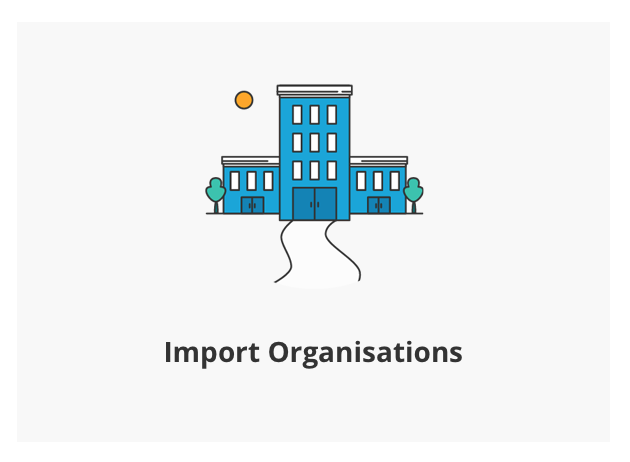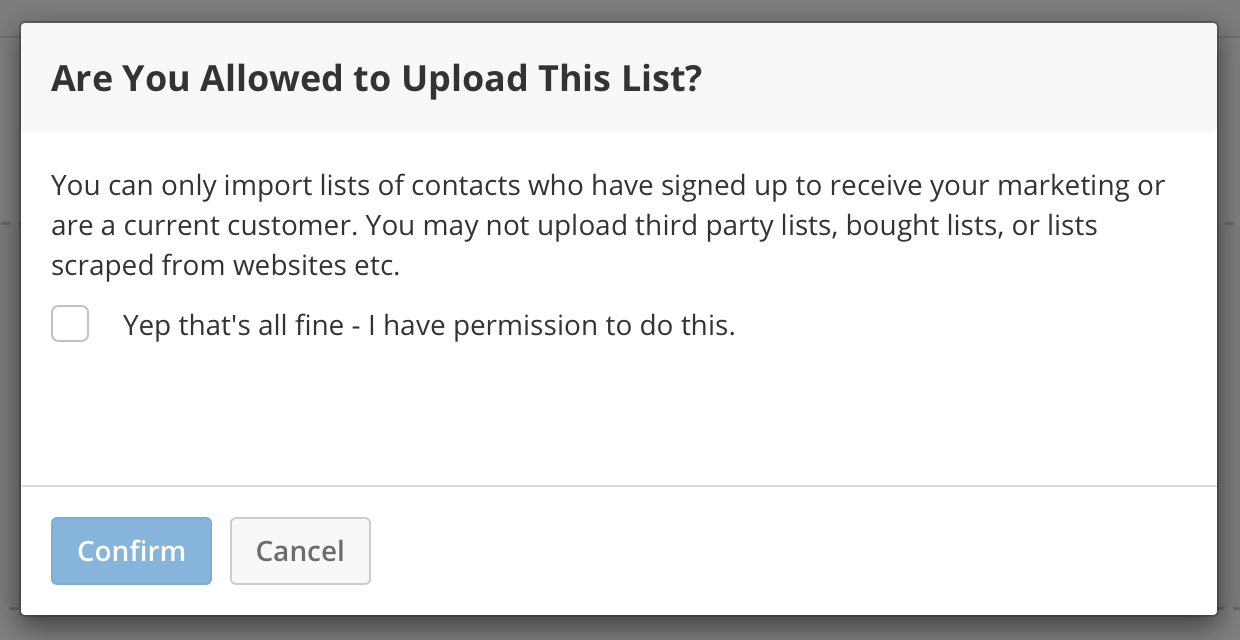Learn how to import your existing organisations into Campus
In this article
- Why Import Your Organisation Data?
- Formatting Your Raw Data
- Organising Your Custom Properties
- The Import
Why Import Your Organisation Data?
Many of our users migrate over from different CRM systems to Campus and so already have some data that they want to put in without having to enter every organisation manually. This is where the organisation import feature comes in.
Before we start, now might be a good opportunity for you to refresh in your mind exactly what an organisation is. Organisations are the places at which your contacts work. They can be businesses or education organisations. You can read more about this here.
Formatting Your Raw Data
It's important that your organisation data is nice and tidy and formatted correctly before you attempt to import it. Poorly formatted raw data will remain poorly formatted after it has been imported, so it's important that you follow this help guide carefully.
There are 12 standard organisation fields in Campus that you can import your data into. You're also able to upload any number of organisation custom properties too (we'll cover that later). First up, here is a list of the 12 standard fields:
Organisation Name
Simply the organisation's name.
Data example: "St Mary's School" / "Toys R Us".
Education/Business
Use ONLY "Education Organisation" or "Business" in this column. If your organisation is an institution/school then use "Education Organisation" and if it's a business, use "Business". If neither is set, Campus will assume the organisation needs to be setup as a Business.
Data example: "Education Organisation" / "Business".
Organisation Type
This column is used to categorise your organisations.
If your Organisation is an Education Organisation
If the organisation is an education organisation you should assign it a school type. Its good practice to try and segment these neatly/minimise your number of organisation types as this makes it easier to create lists of them later.
Data example (if a school): "Independent Primary", "Free School", "Grammar", "University".
If your Organisation is a Business
If the organisation is a business you can give it your own bespoke type. E.g. "Restaurant", "Window Cleaner", "Charity". Similar to the above, try and keep these tidy and segmented to make it easier to manage in the future.
Data example (if an organisation): "Restaurant", "Window Cleaner", "Charity".
Organisation Reference
This field needs to be completed if you are updating an Organisation that already exists in your Contacts module. You need to choose one of email address, telephone number, or postcode, to match with the existing Organisation. If you are importing a new Organisation, this field can be left blank.
Data example: admin@organisation.com
Address Line 1, Address Line 2, Address Line 3
Don't include your organisation's town, county or region in these fields. These three fields are created for you by Campus if Campus can match your organisation to a school in our database. To do this, Campus uses the organisation telephone or organisation email.
Data example: "Unit 3″, "Acacia Drive", "Dino District".
Postcode
Be sure to leave a gap between each postcode's prefix and suffix.
Data example: "SW1 1PQ".
Country
If the organisation is in a different country, add this in here.
Data example: "Spain".
Ensure this is your organisation's email NOT the contact's at that organisation. E.g. 'admin@organisation.com' NOT 'john.smith@organisation.com'. This is one of the fields that Campus uses to match the organisations in your import file to the organisations in the education data module and is the field that is used to create the invisible link so it's important you include this.
Data example: "admin@organisation.com".
Telephone
Ensure this is the organisation's telephone number NOT the contact's direct line at that organisation. This is one of the fields that Campus uses to match the organisations in your import file to the organisations in the education data module and is the field that is used to create the invisible link so it's important you include this.
Data example: "0207 799532″.
Fax
Your organisation's fax number. You can leave this blank if you like.
Data example: "0207 799533″.
Website
Your organisation's website URL. You can leave this blank if you like.
Data example: "http://www.organization.com".
Organisation Custom Properties
You can then add any organisation custom properties as long as you have added your list of them to your Campus plan in the CRM Settings page.
Organising Your Custom Properties
Having formatted your organisation data correctly, and also included any organisation custom properties at the end of your import CSV file. Before you go ahead and upload this organisation data, it's important that you set up your custom properties in Campus. This will mean that your custom properties will get uploaded too.
All you need to do is add your custom properties over in the Contacts Settings Page. There is a help article dedicated to getting this right here.
The Import
It's now time to import your organisation data into Campus.
Step 1
Go to your Account module (by clicking on the Account item in the dropdown menu underneath the user picture top right of your screen). Then select the Your Data item in the submenu and then the Import item in the dropdown.
Now click on the Import Organisations box.

Step 2
You'll now be faced with an important notification.

It's important that you comply with this statement – by ticking the box and confirming, you are confirming that the list of organisations you are about to import was gathered in accordance with UK data protection principles. If you do not agree you will be unable to upload your organisations.
Step 3
Select your CSV by clicking on the Choose File button.

Then locate your Organisation CSV file on your computer.
Step 4
Next, review the Skip the first row when importing checkbox. If your CSV has a header row (which if you have used the Excel data import template to format your data it will have) then leave this ticked (it's ticked by default).

Once you've done this click the Next button in the wizard at the bottom of the screen.
Step 5
Now you need to match your fields with the fields available in Campus. If you have used the template to format your data then Campus will link up these fields for you. If you haven't you need to match them up manually. Don't forget to also match up any custom properties you want to import. If you're finding there is no option to match your custom properties with then go back and review point 3 of this help article.
Once all your fields are matched you can click on the Next button and the import will begin.
During the import process the following happens:
- Campus creates an individual record and page for each of your organisations.
- Campus notes whether each organisation is an education organisation or a business (it looks at what you entered in the 'Education Organisation / Business' column of your import CSV file). If it is an education organisation it will attempt to match it to an Education Organisation in the Education Data Module (it will look at name, email, postcode and telephone) and if it can, it will create an invisible thread between your organisation and the education organisation.
- Campus de-dupes your organisation data – it will not import the same organisation twice leaving you with a nice clean list.
Now just sit tight and watch your organisations import. Once that's complete you're ready to go ahead and import your contacts.